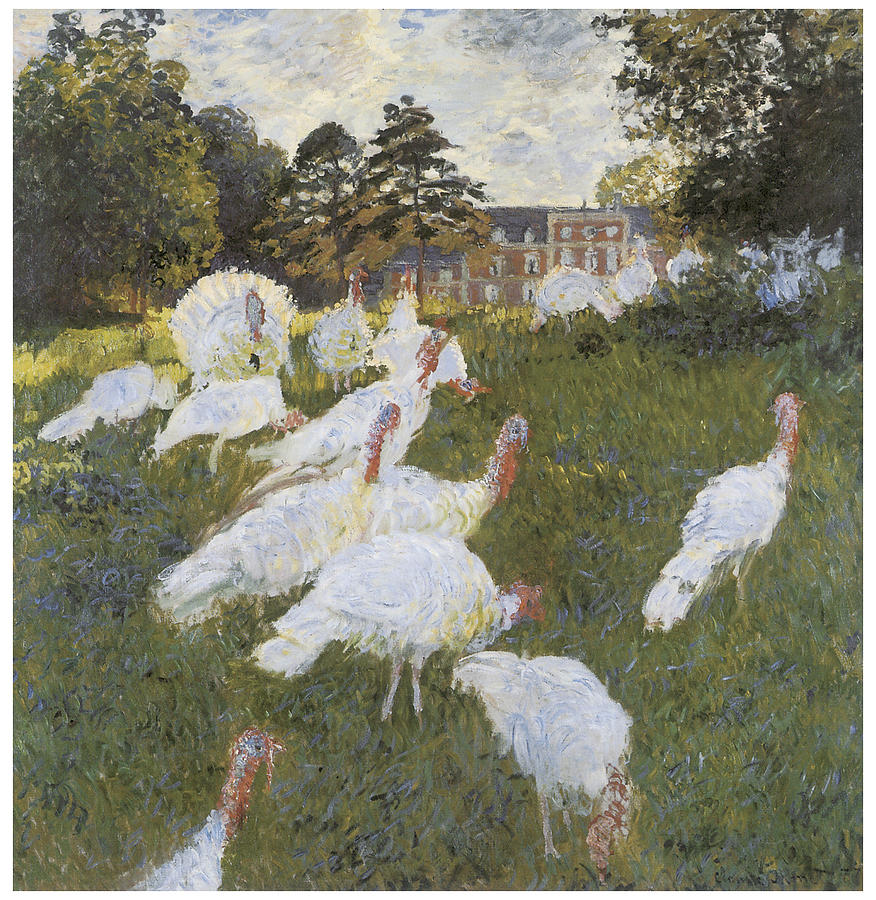 |
| Turkeys Painting by Claude Monet |
The species was well known to the Native Americans and the Aztecs long before the explorers of the New World discovered them. They were so desired by the Spanish explorers that their king ordered that each ship must bring some of the birds home with return voyages.
Mayans used turkey parts in religious ceremonies praying for rain or asking for healing or a good harvest. Native Americans believed that shamans could turn themselves into turkeys and then prowl around enemy villages without being recognized.
The European settlers replaced the boar and the goose with the turkey for festive meals and thus made it the legendary center of the Thanksgiving feast. The official day for the holiday was set by Franklin D. Roosevelt in 1939, although it had been unofficially celebrated for years.
With a wingspan of about six feet, wild turkeys can fly at 55 miles per hour and run at 25 miles per hour, but their modern domesticated cousins can’t fly at all because they have been bread to weigh twice as much. In the wild, turkeys like to sleep in trees and specifically prefer oak trees. Scientists have found that they have twenty distinct vocalizations which are recognized by other turkeys.
Some people have proclaimed that turkeys are so stupid that they will stare up at rain until they drown. Researcher Tom Savaged studied the phenomenon and discovered that they can have a genetic condition which causes them to cock their heads and look into the sky for 30 seconds or more which may have led to the misunderstanding of the animal’s behavior. They have also been observed to have certain social interactions which indicate intelligence.
Wild turkeys forage for acorns, insects, seeds, roots and wild berries to eat. Early settlers found that the birds liked to live near humans and were friendly and trusting and would walk right up to them and even seemed affectionate. A male can weigh up to 38 pounds and is called a Tom turkey or a gobbler.
Although they have no ears, turkeys still have a keen sense of hearing. Hunters can testify that their peripheral vision is astounding because with a turn of their head, they can see 270 degrees and sense movement a hundred yards away. They have a poor sense of smell but do have an excellent sense of taste.
Like many animals that are raised for food, the domestic turkey is mistreated and misunderstood. I think I’ll be a little more thankful for my bird this year.
